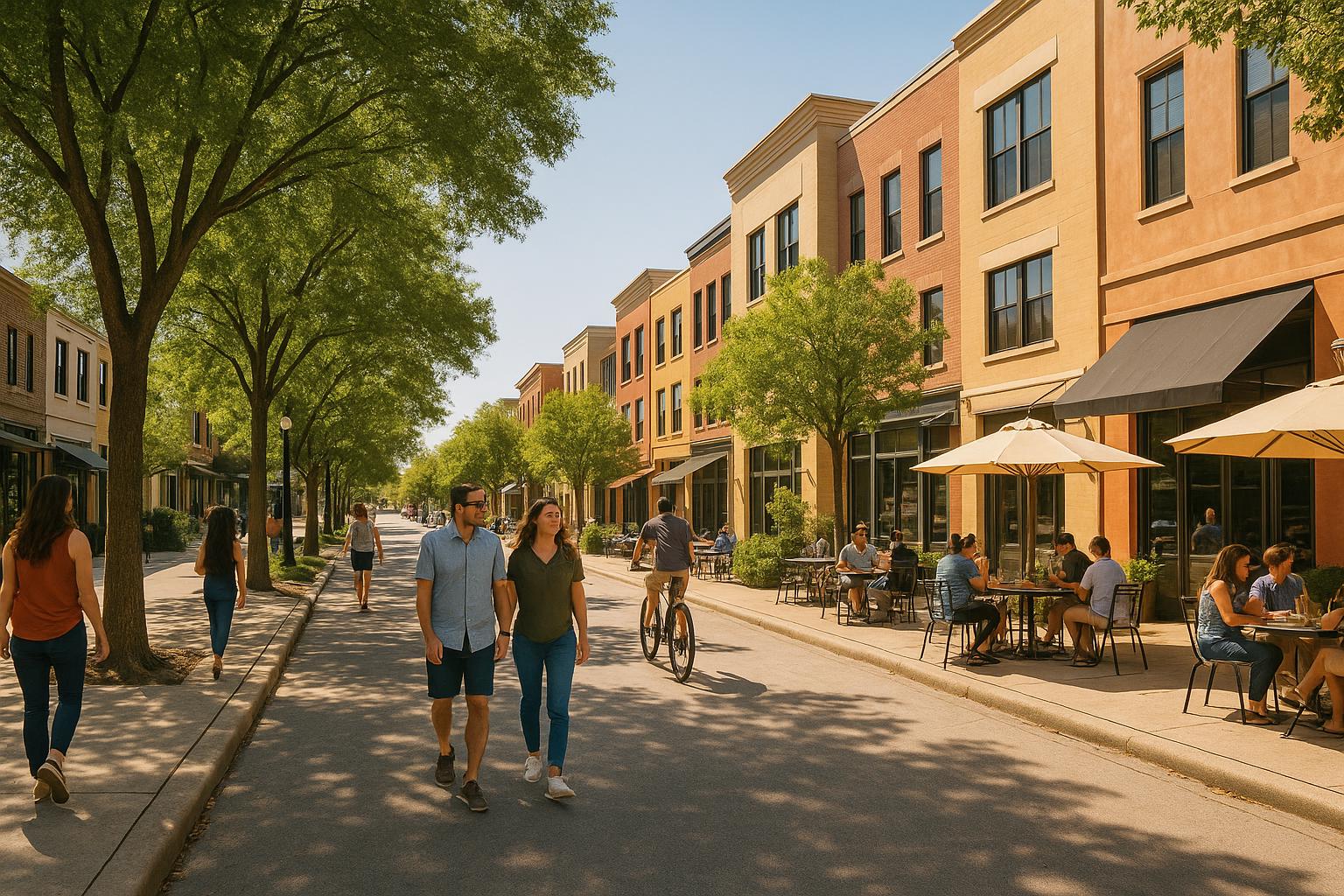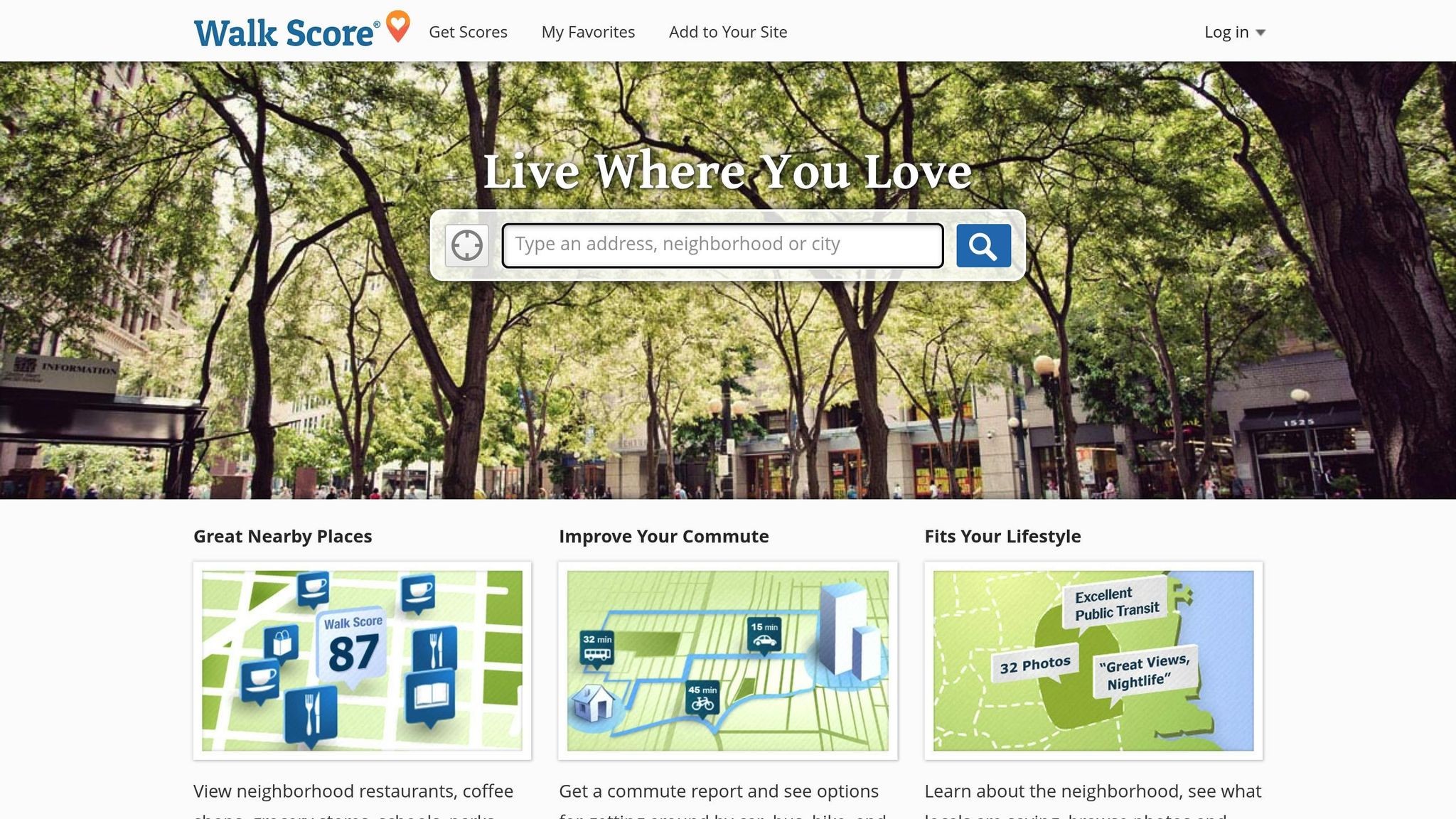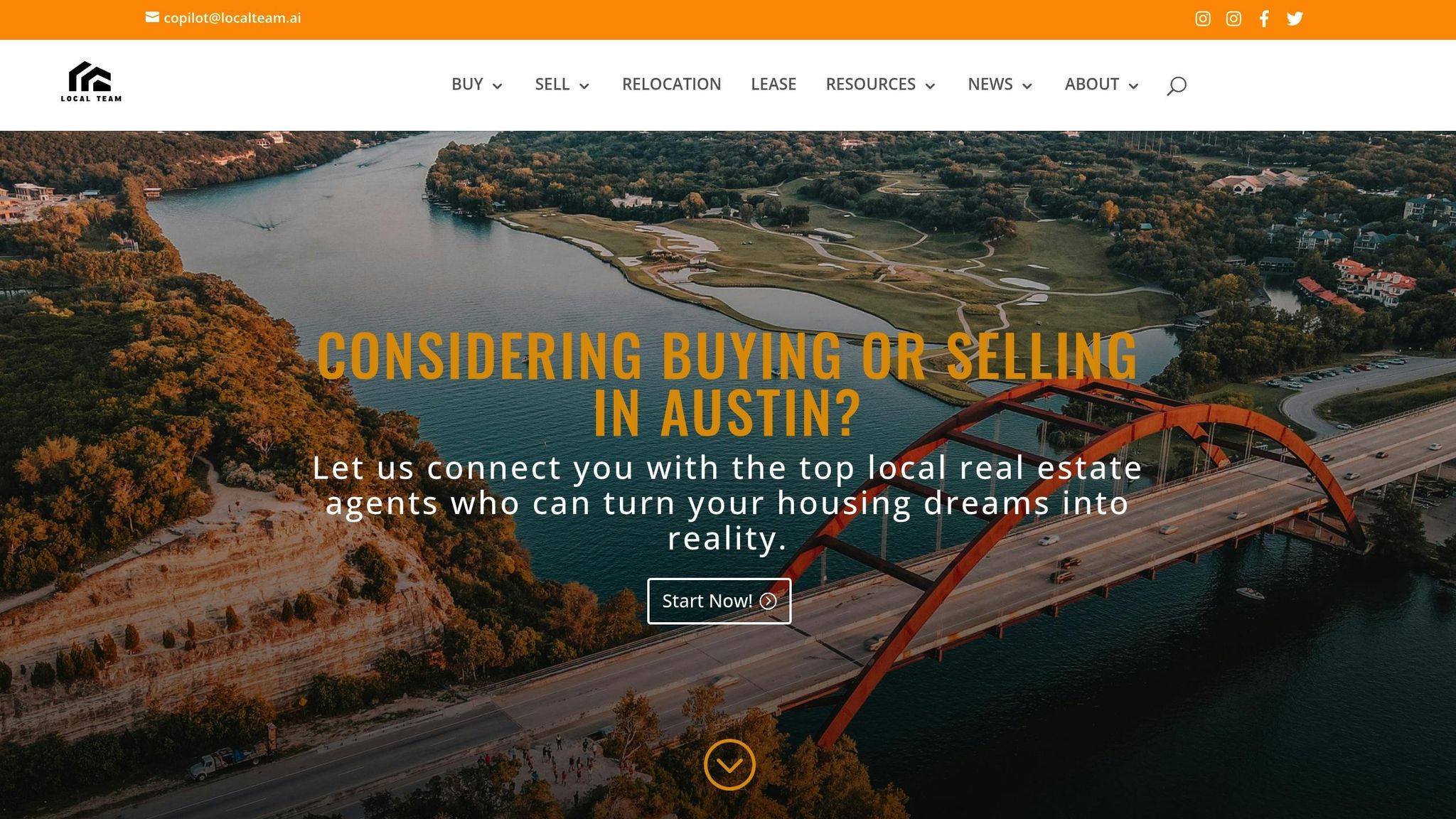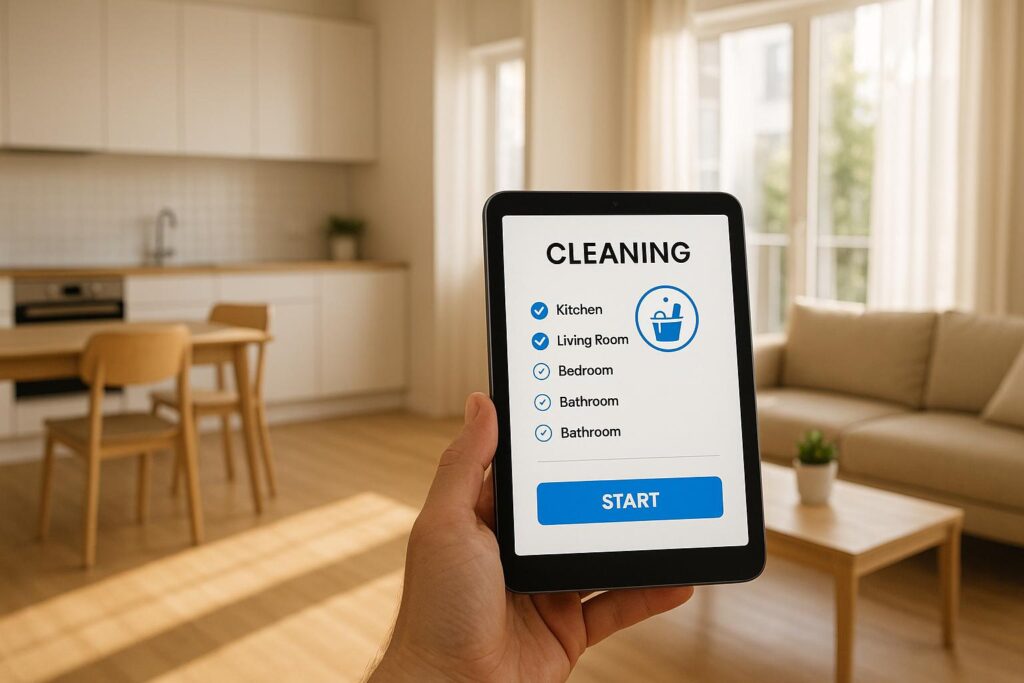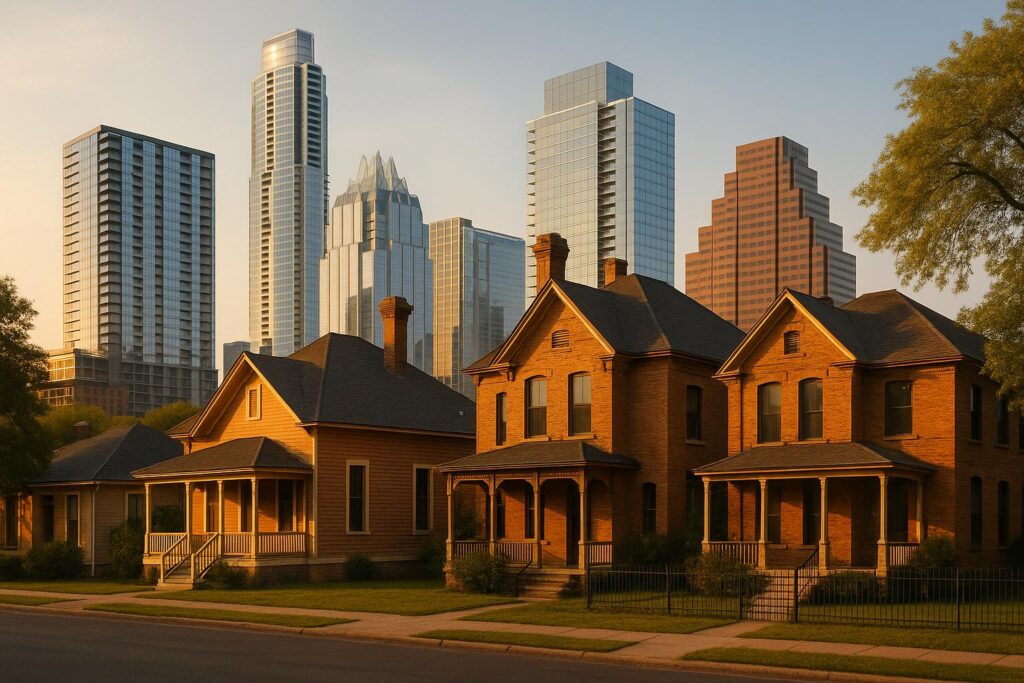Austin is becoming a great place for car-free living, thanks to better sidewalks, bike lanes, and public transit. Choosing a walkable neighborhood can save you money on transportation, keep you active, and reduce your carbon footprint. Here’s a quick look at Austin’s most walkable neighborhoods:
- Downtown Austin: Walk Score of 99. Everything is close by – restaurants, shops, and transit.
- South Congress (SoCo): Known for its vibrant shops, live music, and bike-friendly streets.
- Hyde Park: Historic charm with tree-lined streets and easy access to daily needs.
- East Austin: Walk Score of 82. Packed with dining, culture, and access to trails.
- Mueller: Designed for walking and biking, with parks, trails, and nearby amenities.
Whether you’re drawn to the energy of downtown or the relaxed vibe of Hyde Park, these neighborhoods make living without a car practical and enjoyable. Public transit options like CapMetro buses and MetroRail also connect many of these areas, making it easier to get around.
7 Most Walkable Neighborhoods in Austin, Texas 🚶♂️ | Where You Can Ditch the Car & Love Your Life
What Makes a Neighborhood Walkable?
Not all neighborhoods are designed with walkability in mind. The most pedestrian-friendly areas share certain features that make it easy and enjoyable to live without a car. By understanding these elements, you can pinpoint Austin neighborhoods that truly support a car-free lifestyle. Let’s break down what makes a neighborhood in Austin a walkable haven.
Walk Score and Access to Daily Essentials
A neighborhood’s Walk Score is a quick way to gauge its walkability. Scores above 90 mean most errands can be done on foot, while scores between 70 and 89 indicate many needs are within walking distance. Scores below 50 often suggest that owning a car is necessary.
The concept of a "15-minute neighborhood" is key here. It means having essentials like grocery stores, coffee shops, restaurants, and services (think pharmacies, banks, and dry cleaners) all within a short stroll – typically just a few blocks. In Austin, some of the most walkable areas pack these amenities tightly together, making life simpler and more convenient.
Mixed-use developments are a big reason for this convenience. These buildings combine residential spaces with ground-floor retail, ensuring that essentials are just steps away. You’ll see this pattern in Austin’s downtown core and neighborhoods like Mueller, where apartments sit above cafes, boutiques, and other necessities, creating a vibrant, walkable environment.
Bike and Pedestrian Infrastructure
Austin has made strides in improving its bike and pedestrian infrastructure, which plays a major role in walkability. Protected bike lanes, like those on Guadalupe and Rio Grande Streets, provide safe, separated pathways for cyclists of all experience levels.
For pedestrians, wide sidewalks with shade trees are a must – especially in Austin’s hot climate. The best walkable neighborhoods have continuous, well-maintained sidewalks that don’t force people to step into traffic. Crosswalks, traffic signals, and pedestrian countdown timers also make walking safer and more efficient. Features like leading pedestrian intervals, which give walkers a head start at intersections, are becoming more common across the city.
Austin’s trail system adds another layer of connectivity. The Ann and Roy Butler Hike-and-Bike Trail, circling Lady Bird Lake, connects downtown to South Austin, while the Shoal Creek Trail provides a car-free route between downtown and North Austin neighborhoods. These trails not only make walking and biking practical but also offer scenic routes for recreation and commuting.
Austin’s Public Transit Options
Public transit is a cornerstone of Austin’s car-free lifestyle. CapMetro’s bus network is the backbone of the city’s transit system, with frequent routes like the 801 and 803 Rapid lines running every 15 minutes during peak hours. These high-frequency routes connect major residential areas to employment hubs, making them a key feature of walkable neighborhoods.
MetroRail’s Red Line is another important option, linking Hyde Park to downtown and extending service to Cedar Park and Leander during peak times. Additionally, bus rapid transit routes like the 801 and 803 offer faster, more reliable service by using dedicated lanes in many sections. For example, the 801 travels from South Austin through downtown to North Austin, while the 803 connects East Austin with downtown and the UT campus.
Frequent transit options make spontaneous trips more manageable, with routes running every 30 minutes or less during the day. Plus, connectivity to major destinations such as Austin-Bergstrom International Airport, the UT campus, and downtown employment centers ensures that public transit can serve as a true alternative to car ownership, rather than just a backup plan.
Top Walkable Neighborhoods in Austin
Austin is stepping up its game when it comes to sustainable transport, and some neighborhoods are proving that car-free living is not just possible but practical. With Walk Scores soaring into the 80s and 90s, these areas make urban convenience a reality. Let’s take a closer look at what makes these neighborhoods stand out.
Downtown Austin
Downtown Austin leads the pack with a Walk Score of 90. Here, everything you need – grocery stores, restaurants, entertainment, and services – is just a short stroll away. High-rise apartments and lofts put daily essentials at your doorstep, making it a favorite for professionals and singles who thrive on the energy of city life.
As Austin’s central transit hub, Downtown offers extensive bus and rail connections. Its grid system and well-maintained sidewalks make it incredibly pedestrian-friendly. If you’re looking for the buzz of urban living, this is the place to be.
South Congress (SoCo)
South Congress, or SoCo, is where Austin’s quirky charm truly shines. The area is famous for its weekend street fairs, eclectic shops, live music, and a variety of dining options. Its bike-friendly streets and compact layout make it easy to explore without a car. SoCo attracts creatives and young professionals who love being at the heart of Austin’s vibrant cultural scene.
Hyde Park
Hyde Park, with its historic grid layout and wide sidewalks, has been walkable since the late 1800s. This neighborhood exudes charm with its tree-lined streets, vintage shops, cozy bakeries, and parks. It’s a favorite among university staff, graduate students, and families who enjoy its quiet, residential vibe while still having easy access to everyday essentials.
East Austin
East Austin offers a mix of historic homes and modern developments, all tied together by a Walk Score of 82. The area is packed with dining spots, cultural landmarks, and improved bus and bike routes. Plus, its proximity to Lady Bird Lake means recreational activities are just a short walk away. East Austin’s creative energy continues to draw artists and young professionals who embrace its unique blend of old and new.
Mueller
Mueller is a standout as a master-planned community designed with pedestrians and cyclists in mind. The neighborhood features integrated trails, parks, and retail spaces, making it easy to navigate on foot or bike. Restaurants, shops, and services are thoughtfully woven into the area, and reliable public transit adds another layer of convenience. Mueller sets the standard for sustainable urban living, offering a glimpse into what walkable communities can achieve.
sbb-itb-4c99469
Comparison Table of Walkable Neighborhoods
Here’s a breakdown of Walk Scores for some of Austin’s most walkable neighborhoods. These scores offer a snapshot of how easy it is to get around on foot in each area:
| Neighborhood | Walk Score | Walk Score Category |
|---|---|---|
| Downtown Austin | 99 | Walker’s Paradise |
| East Austin | 86 | Very Walkable |
| Mueller | 68–79 | Somewhat to Very Walkable |
| South Congress | Not available | Not available |
| Hyde Park | Not available | Not available |
Downtown Austin shines with a near-perfect Walk Score of 99, earning it the title of a Walker’s Paradise. East Austin follows with a strong score of 86, categorized as Very Walkable. Mueller presents a range of scores between 68 and 79, reflecting the neighborhood’s mix of older and newer developments.
While specific Walk Scores for South Congress and Hyde Park aren’t available, the overall scores in these neighborhoods are notably higher than Austin’s citywide average Walk Score of 42. This data showcases how these areas make it easier to embrace a car-free lifestyle.
How Austin Local Team Can Help You Find Your Ideal Walkable Neighborhood
When it comes to finding a home in Austin’s most walkable neighborhoods, having a team that knows the area inside and out can make all the difference. That’s where Austin Local Team steps in, connecting you with real estate professionals who truly understand the city’s unique communities and walkable living options.
Tailored Agent Matchmaking for Walkable Living
Your journey toward a car-free lifestyle begins with identifying your specific needs. Austin Local Team simplifies this process with a short questionnaire, where you outline your preferences – such as access to walkable amenities, proximity to public transit, and lifestyle priorities. This ensures you’re paired with agents who have the right local knowledge to guide you.
"At Austin Local Team, we specialize in matching you with top-notch, pre-screened real estate agents who are experts in the Austin market."
Comprehensive Home and Apartment Search
Whether you’re buying or renting, Austin Local Team offers a powerful home search platform that covers all listings in the Austin area. If you’re a renter, their service connects you with professionals who consider everything from your budget to your desired amenities and location. By using advanced tools, they make the entire process smooth and efficient.
"By using cutting-edge tools, we make the process of finding or selling a home efficient and stress-free."
Market Insights for Smarter Decisions
Understanding property values in walkable neighborhoods is crucial for making informed choices. That’s why Austin Local Team provides Comparative Market Analysis (CMA) services. This in-depth analysis looks at recently sold properties in the area, offering more accurate valuations than automated tools. For those relocating to Austin, their specialists ensure a seamless transition into your new walkable lifestyle.
"A Comparative Market Analysis (CMA) is an estimate of your home’s value based on recently sold, similar properties in the immediate area. By analyzing the data behind comparables in more depth than what Zestimates and other instant-result algorithms can, a CMA provides a more accurate estimate of what your home is worth."
Austin Local Team combines advanced technology with local expertise to make your home search – whether buying, renting, or relocating – as stress-free as possible. Their CMA service spans Austin and surrounding areas, giving you the tools to compare property values across neighborhoods. By tailoring every interaction to your needs, they help you embrace a walkable, car-free lifestyle in Austin.
Conclusion: Living Car-Free in Austin
Austin is steadily transforming into a city where walking, biking, and public transit are becoming not just viable but desirable ways to get around. This shift opens up the chance for residents to embrace a lifestyle that prioritizes health, affordability, and a stronger sense of community. Some neighborhoods in Austin are already proving that living without a car is both practical and appealing.
Take Mueller, for example. A study by Texas A&M revealed that after moving to this walkable neighborhood, 70.5% of residents reported being more physically active, while 51.6% noticed improvements in their overall health. On top of that, residents cut their weekly car use by 90 minutes and added nearly 48 minutes of walking to their routines.
The financial perks are hard to ignore, too. Walkable neighborhoods can save households anywhere from $4,370 to $9,320 annually on transportation costs, thanks to fewer vehicle miles traveled. Plus, homes in these areas tend to hold their value and even appreciate faster due to high demand.
But the benefits go beyond individual savings and health. A broader cultural shift is taking place in Austin. Urban planners are rethinking car-focused designs, younger generations are gravitating toward walkable cities, and local businesses are thriving in pedestrian-friendly areas. This creates a ripple effect, making walkable neighborhoods even more appealing and sustainable over time.
Whether your heart is set on the vibrant energy of Downtown, the quirky charm of South Congress, the historic streets of Hyde Park, the creative vibe of East Austin, or the thoughtfully designed community of Mueller, each neighborhood has something special to offer for those looking to live car-free. The key is finding the one that matches your lifestyle and priorities.
With all these benefits coming together, now is the perfect time to explore what a car-free lifestyle in Austin could mean for you. As the city continues to evolve, you have the chance to deepen your connection to the community, improve your quality of life, and live in a way that aligns with your values. If you’re ready to take the next step, reach out to the Austin Local Team – they can help you find the perfect walkable neighborhood to call home.
FAQs
What makes a neighborhood in Austin ideal for car-free living?
A neighborhood in Austin becomes a great spot for car-free living when it provides convenient access to everyday essentials and amenities. Think well-maintained sidewalks, safe bike lanes, and dependable public transportation. Having grocery stores, restaurants, parks, and other key services close by makes life without a car much easier.
On top of that, areas that blend housing options with nearby businesses and community spaces tend to feel more lively and walkable. A higher population density paired with thoughtfully planned streets boosts both convenience and safety for those who prefer to get around without a car.
How does Austin’s public transit make car-free living easier in walkable neighborhoods?
Austin’s public transit system, run by CapMetro, offers a practical option for car-free living, especially in neighborhoods that are easy to navigate on foot. Places like Downtown Austin, Hyde Park, and Highland stand out for their convenient access to bus routes and the MetroRail, which links major parts of the city. Downtown, in particular, acts as a central hub, giving residents access to numerous bus lines and a key rail station.
Though Austin’s transit network continues to grow, it works best in densely populated, pedestrian-friendly areas. These neighborhoods often boast high Walk Scores, making them perfect for those who prefer walking, biking, or relying on public transit instead of driving.
What are the health and financial perks of living in a walkable Austin neighborhood?
Living in a walkable neighborhood in Austin comes with plenty of perks. For starters, it’s great for your health. Walking more often can lower the risk of obesity, strengthen your heart, and even improve your mood and mental health. Plus, these neighborhoods naturally encourage interaction, making it easier to connect with neighbors and build a stronger sense of community.
On the financial side, walkable areas can help you cut back on transportation expenses like gas, car repairs, and parking fees. And here’s a bonus: homes in these neighborhoods often see higher property value growth over time, making them a smart choice for long-term investment. All in all, living in a walkable neighborhood means a healthier lifestyle, potential savings, and a tighter-knit community.

